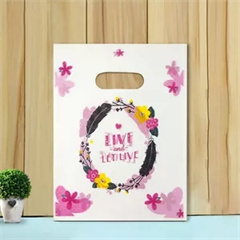“Sustainable PVC” might seem like a contradiction in terms because PVC (Polyvinyl chloride) is traditionally associated with environmental concerns due to its production process, use of fossil fuels, and the release of chlorine gas and dioxins. However, there are ongoing efforts to make PVC production and usage more environmentally friendly, and some argue that sustainable PVC could have a place in the future of fashion. Here are some considerations regarding the potential for sustainable PVC in the fashion industry:
- Recycled PVC: One approach to sustainability is using recycled PVC. Recycling PVC can reduce the need for virgin PVC production, saving energy and reducing waste. Manufacturers are exploring ways to incorporate recycled PVC into fashion products, including bags.
- Eco-Friendly PVC Production: Innovations in PVC production can make the process more environmentally friendly. This includes reducing the use of hazardous chemicals, minimizing energy consumption, and implementing closed-loop systems to reduce waste.
- Phthalate-Free PVC: Phthalates, used as plasticizers in PVC production, are of environmental concern. Some manufacturers are transitioning to phthalate-free PVC, which is less harmful to the environment.
- Biodegradable PVC: Research is ongoing into developing biodegradable forms of PVC that break down more readily in natural environments. Biodegradable PVC could offer an environmentally friendly alternative in the future.
- Circular Fashion: Circular fashion practices, such as recycling and upcycling, can be applied to PVC products. Old PVC items can be repurposed into new designs, reducing the demand for new PVC production.
- Regulatory Compliance: Stricter regulations and standards for PVC production and disposal can encourage more sustainable practices within the industry.
- Consumer Demand: As consumer awareness of environmental issues grows, there is increasing demand for sustainable fashion options. Brands that adopt sustainable PVC practices may attract eco-conscious consumers.
However, it’s essential to approach the concept of sustainable PVC with caution and skepticism:
- Environmental Concerns: PVC production still involves significant environmental issues, including the use of fossil fuels and the release of pollutants. Truly sustainable PVC would need to address these concerns comprehensively.
- Alternative Materials: Many alternative materials, such as organic cotton, recycled polyester, and innovative bio-based materials, are already available and considered more sustainable than traditional PVC.
- Transparency: Brands need to be transparent about their PVC sourcing and production processes to ensure that sustainable claims are valid.
- End-of-Life Disposal: The disposal of PVC products, even if made sustainably, remains a challenge, as PVC is not biodegradable. Proper recycling and waste management are crucial.
In conclusion, while there are efforts to make PVC more sustainable, it’s essential to consider alternative materials and practices that have a more established track record of environmental friendliness in the fashion industry. Sustainable PVC could have a role in fashion’s future, but it should be part of a broader shift towards more eco-conscious practices in the industry.








